The Role of Parent Phase Topology in Double Young–Kurdjumow–Sachs Variant Selection during Phase Transformation in Low-Carbon Steels
Abstract
:1. Introduction
2. Results
2.1. Fraction of Double YKS Orientation Relations
2.2. Transformation Textures of the IF Hot Rolled Steel Sheet
2.3. Texture Memory during Forward and Reverse α ⇌ γ Transformation
2.4. Martensitic High Strength Steel
3. Discussion
4. Conclusions
Author Contributions
Funding
Institutional Review Board Statement
Informed Consent Statement
Data Availability Statement
Acknowledgments
Conflicts of Interest
References
- Yoshinaga, N.; Ushioda, K.; Itami, A.; Akisue, O. α + γ and γ Phases Annealing in Ultra Low-carbon Sheet Steels. ISIJ Int. 1994, 34, 33–42. [Google Scholar] [CrossRef]
- Young, J. The Crystal Structure of Meteoric Iron as Determined by X-Ray Analysis. Proc. R. Soc. Lond. 1926, 112, 630–641. [Google Scholar] [CrossRef]
- Kurdjumow, G.; Sachs, G. Über den Mechanismus der Stahlhärtung. Z. Physik 1930, 64, 325–343. [Google Scholar] [CrossRef]
- Offerman, S.E.; Van Dijk, N.H.; Sietsma, J.; Grigull, S.; Lauridsen, E.M.; Margulies, L.; Poulsen, H.F.; Rekveldt, M.T.; Van der Zwaag, S. Grain nucleation and growth during phase transformations. Science 2002, 298, 1003–1005. [Google Scholar] [CrossRef] [PubMed] [Green Version]
- Nguyen-Minh, T.; Sidor, J.J.; Petrov, R.H.; Kestens, L.A.I. Occurrence of shear bands in rotated Goss ({1 1 0}〈1 1 0〉) orientations of metals with bcc crystal structure. Scr. Mater. 2012, 67, 935–938. [Google Scholar] [CrossRef]
- Tomida, T.; Wakita, M.; Yoshida, M.; Imai, N. A variant selection rule in transformation in steel and prediction of transformation texture. Mater. Sci. Forum 2010, 638–642, 2846–2851. [Google Scholar] [CrossRef]
- Lischewski, I.; Gottstein, G. Nucleation and variant selection during the α-γ-α phase transformation in microalloyed steel. Acta Mater. 2011, 59, 1530–1541. [Google Scholar] [CrossRef]
- Tomida, T.; Wakita, M.; Yasuyama, M.; Sugaya, S.; Tomota, Y.; Vogel, S.C. Memory effects of transformation textures in steel and its prediction by the double Kurdjumov-Sachs relation. Acta Mater. 2013, 61, 2828–2839. [Google Scholar] [CrossRef]
- Tomida, T. Variant selection mechanism by elastic anisotropy and double K-S relation for transformation texture in steel; difference between martensite and ferrite. Acta Mater. 2018, 146, 25–41. [Google Scholar] [CrossRef]
- Tomida, T.; Vakhitova, E.; Sornin, D.; Wright, J.; François, M.; Onuki, Y.; Hirano, T.; Hoshikawa, A.; Ishigaki, T.; Sato, S. Texture Memory in Si-Mn and ODS Steels Observed In Situ by Pulsed Neutron and Synchrotron X-Ray Diffractions and Prediction by Double Kurdjumov-Sachs Relation: A Concept for Intense Variant Selection. Metall. Mater. Trans. A 2021, 52, 1368–1381. [Google Scholar] [CrossRef]
- Tomida, T.; Vogel, S.; Onuki, Y.; Sato, S. Texture memory in hexagonal metals and its mechanism. Metals 2021, 11, 1653. [Google Scholar] [CrossRef]
- Hutchinson, B.; Kestens, L.A.I. Origins of texture memory in steels. In Ceramic Transactions, Proceedings of the 15th International Conference on Textures of Materials, ICOTOM 15, Pittsburgh, Pennsylvania, 1–6 June 2008; Wiley: Hoboken, NJ, USA, 2010; Volume 201, pp. 281–290. [Google Scholar] [CrossRef]
- Tomida, T.; Wakita, M.; Yoshida, M.; Imai, N. Quantitative prediction of transformation texture in hot-rolled steel sheets by multiple KS relation. In Ceramic Transactions, Proceedings of the 15th International Conference on Textures of Materials, ICOTOM 15, Pittsburgh, Pennsylvania, 1–6 June 2008; Wiley: Hoboken, NJ, USA, 2010; Volume 200, pp. 325–332. [Google Scholar] [CrossRef]
- Landheer, H.; Offerman, S.E.; Petrov, R.H.; Kestens, L.A.I. The role of crystal misorientations during solid-state nucleation of ferrite in austenite. Acta Mater. 2009, 57, 1486–1496. [Google Scholar] [CrossRef]
- Yoshinaga, N. Recrystallization and α→γ→α Transformation Textures in Ultra Low Carbon Sheet Steels. PhD Thesis, Ghent University, Ghent, Belgium, 1999. [Google Scholar]
- Yoshinaga, N.; Kestens, L.; Vanderschueren, D.; De Blauwe, K.; De Cooman, B. Influence of hot-rolling texture and cold-rolling reduction on planar anisotropy of r-values after recrystallization of IF steels. In Proceedings of the 4th International Conference on Recrystallization and Related Phenomena, Tsukuba City, Japan, 13–16 July 1999; Volume 13, p. 393. [Google Scholar]
- Yoshinaga, N.; Inoue, H.; Kawasaki, K.; Kestens, L.; De Cooman, B.C. Factors affecting texture memory appearing through α → γ → α transformation in IF steels. Mater. Trans. 2007, 48, 2036–2042. [Google Scholar] [CrossRef] [Green Version]
- Yoshinaga, N.; Kestens, L.; De Cooman, B.C. α→γ→α transformation texture formation at cold-rolled ultra low carbon steel surfaces. In Materials Science Forum, Proceedings of the 14th International Conference on Textures of Materials, ICOTOM 14, online 15 September 2005; Trans Tech Publications Ltd.: Bäch, Switzerland, 2005; Volume 495–497, pp. 1267–1272. [Google Scholar] [CrossRef]
- Gautam, J.; Petrov, R.; Kestens, L. Surface texture evolution during α-γ-α transformation in Mn and Al alloyed ultra-low carbon steel. Mater. Sci. Forum 2007, 550, 503–508. [Google Scholar] [CrossRef]
- Gautam, J.; Petrov, R.; Kestens, L.; Leunis, E. Surface energy controlled α-γ-α transformation texture and microstructure character study in ULC steels alloyed with Mn and Al. J. Mater. Sci. 2008, 43, 3969–3975. [Google Scholar] [CrossRef]

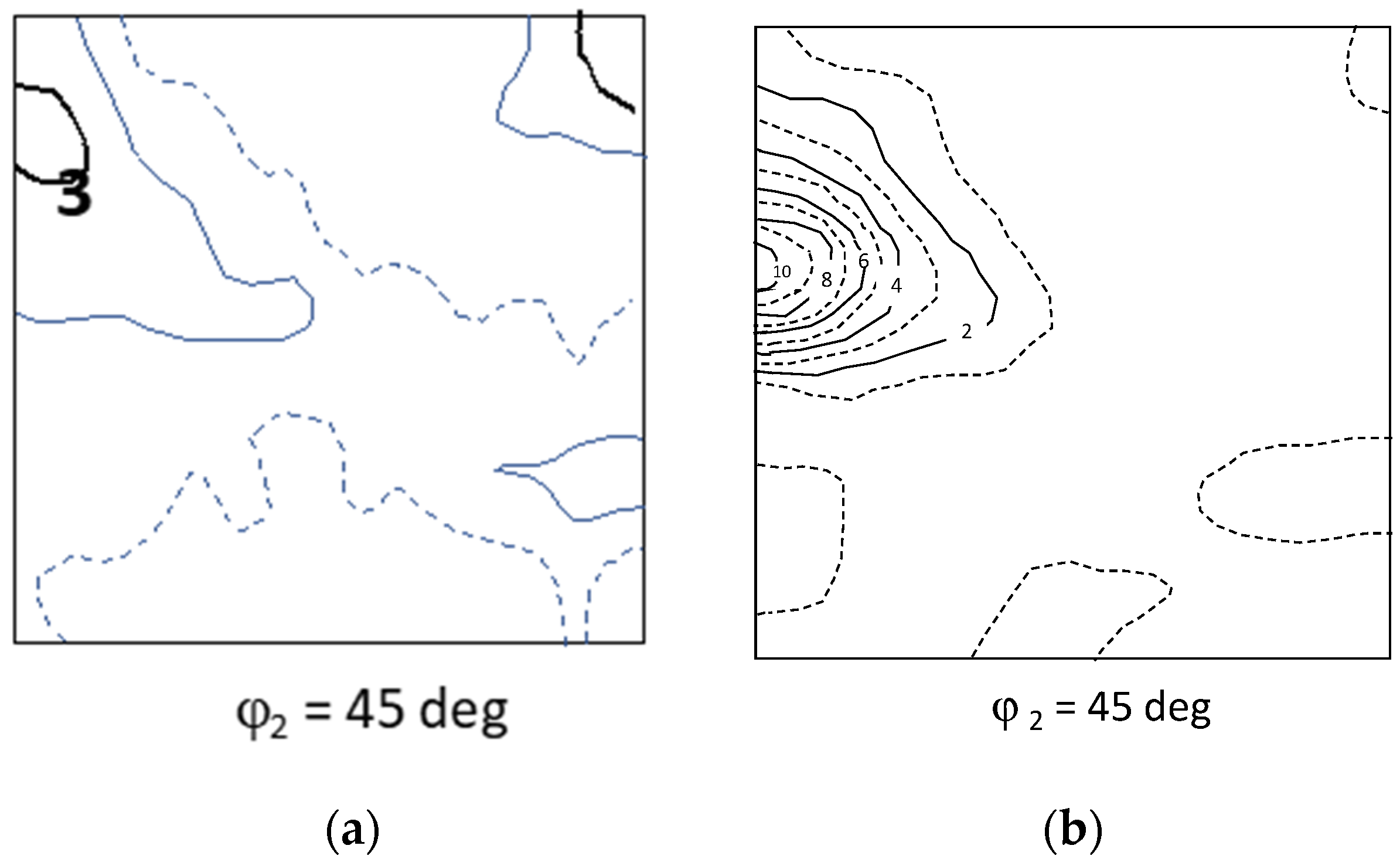

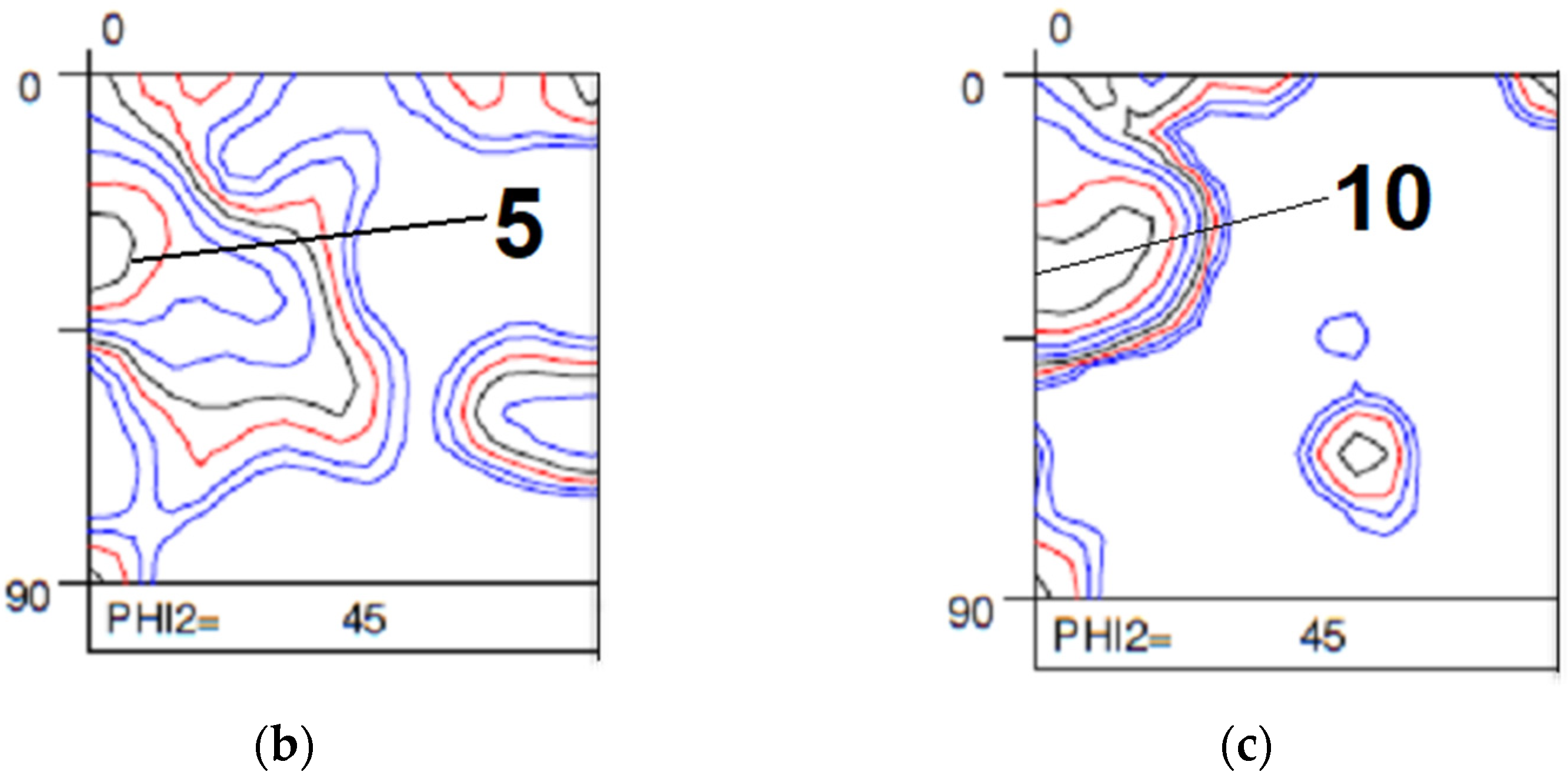

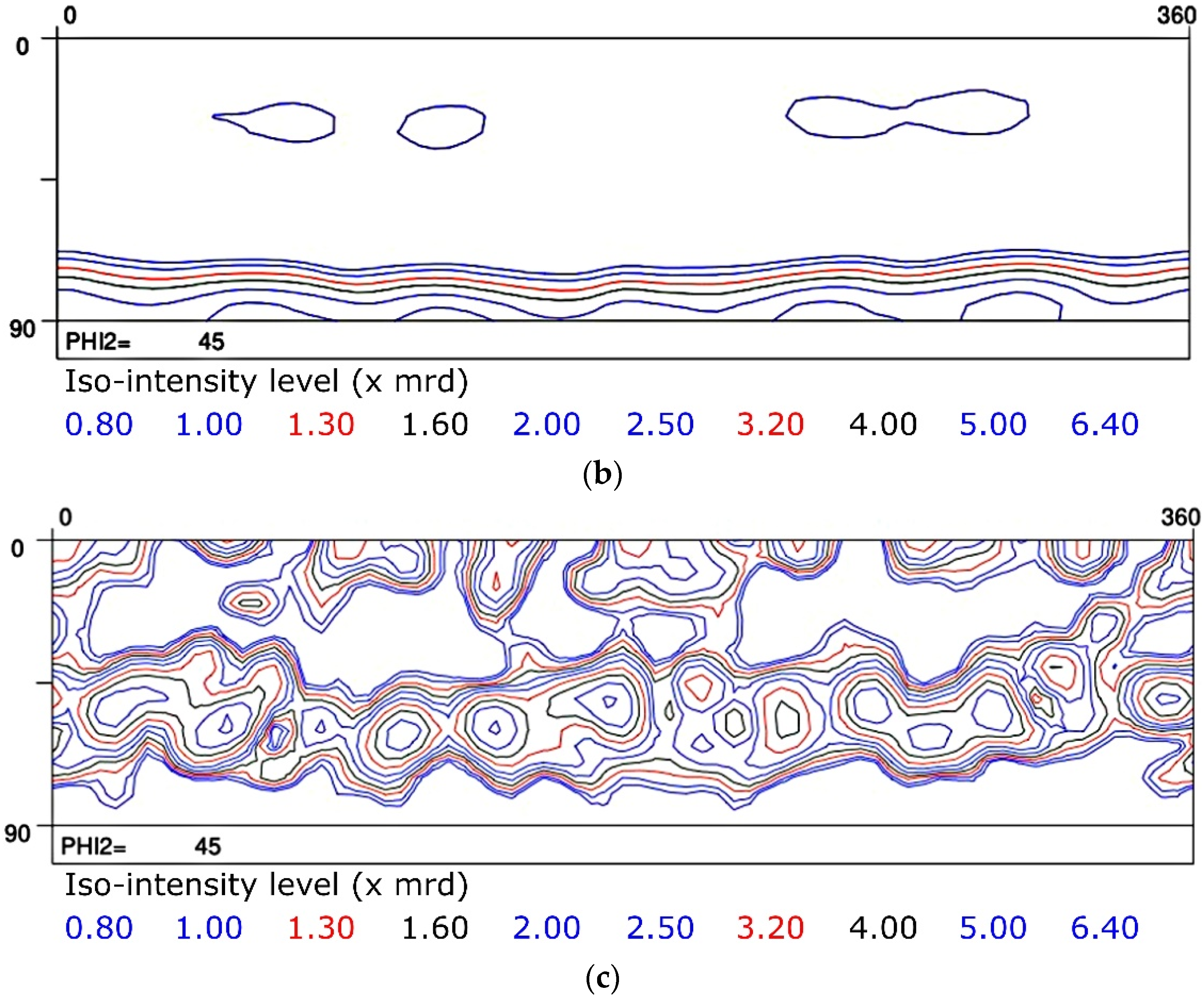
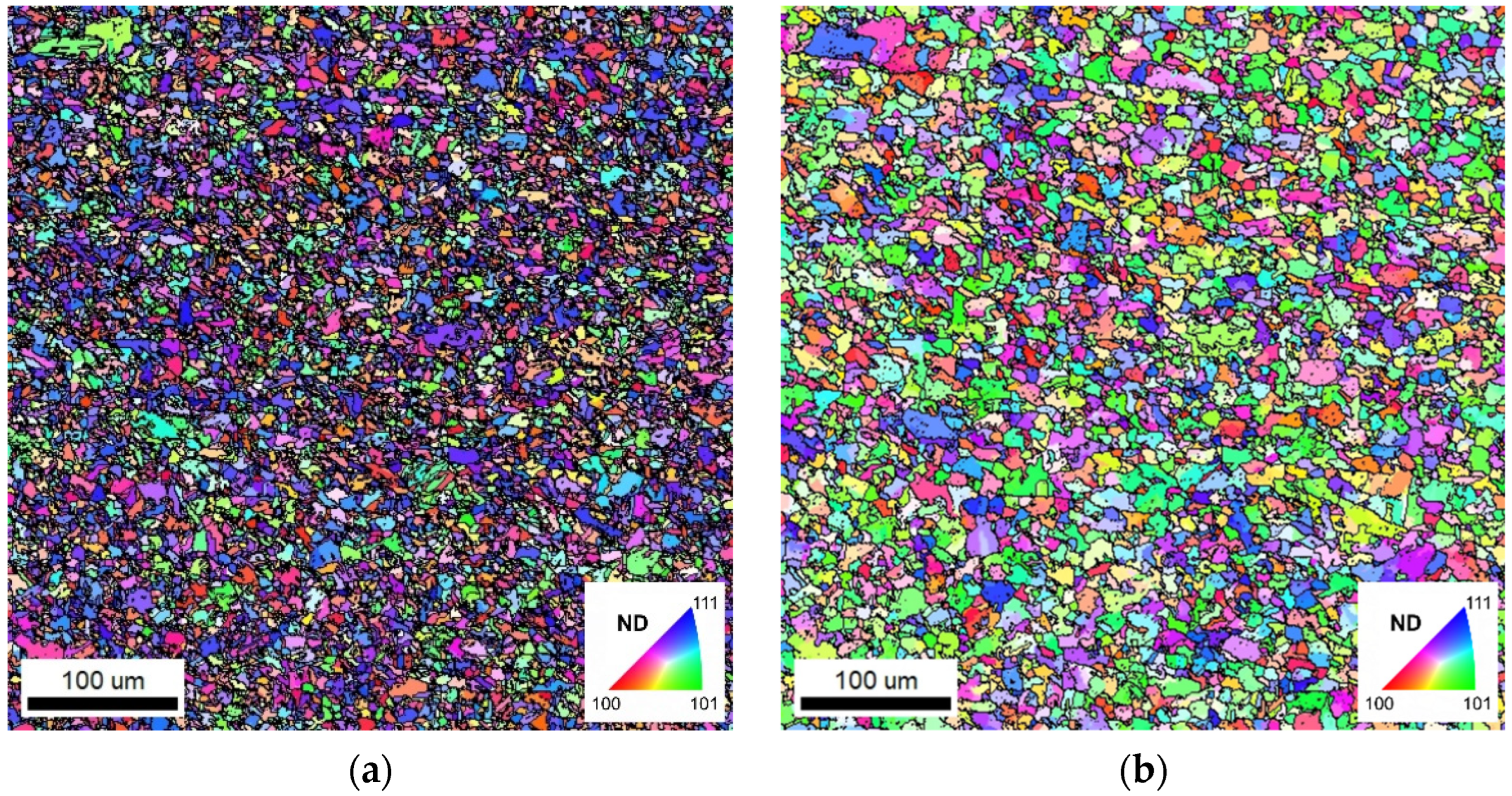

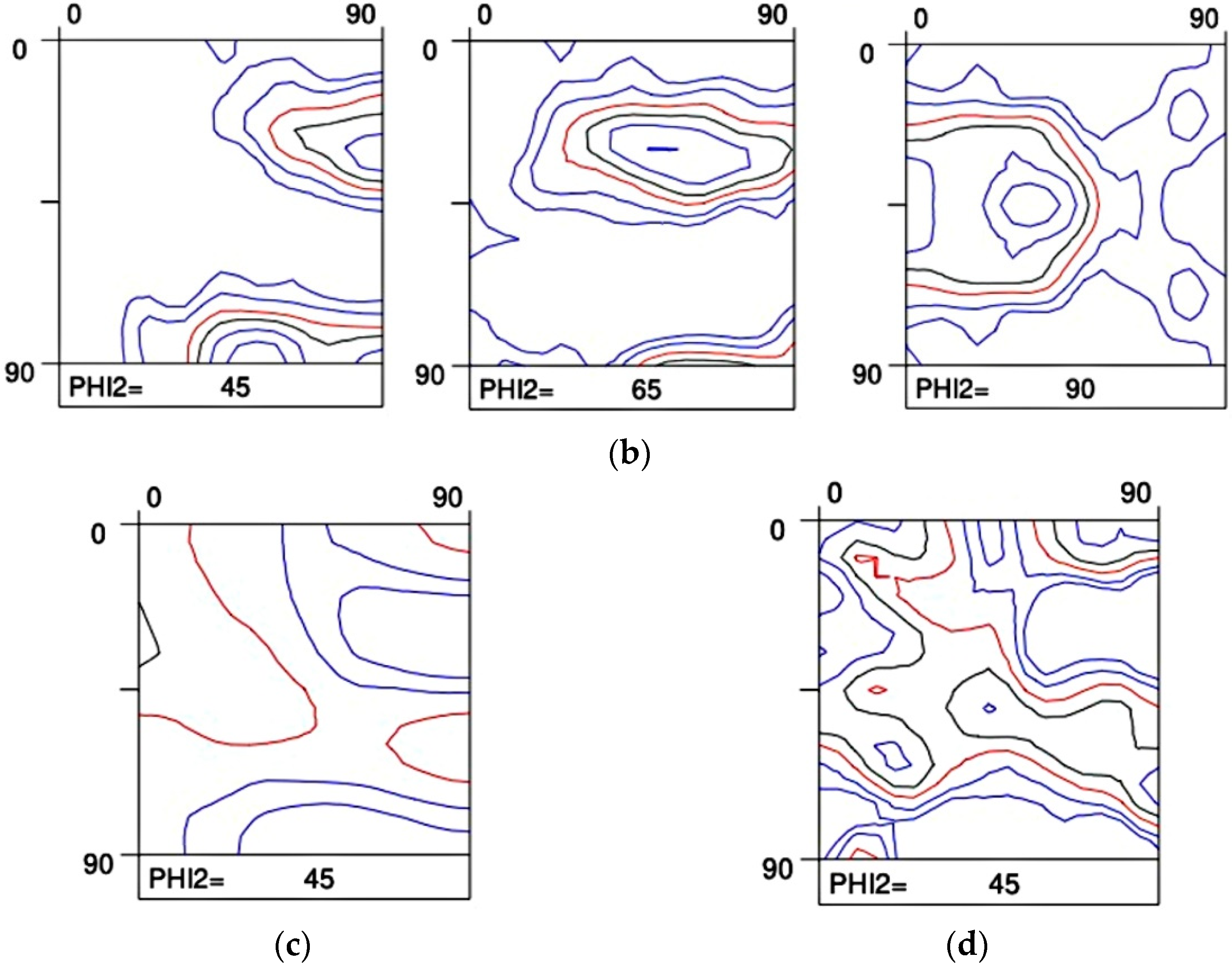
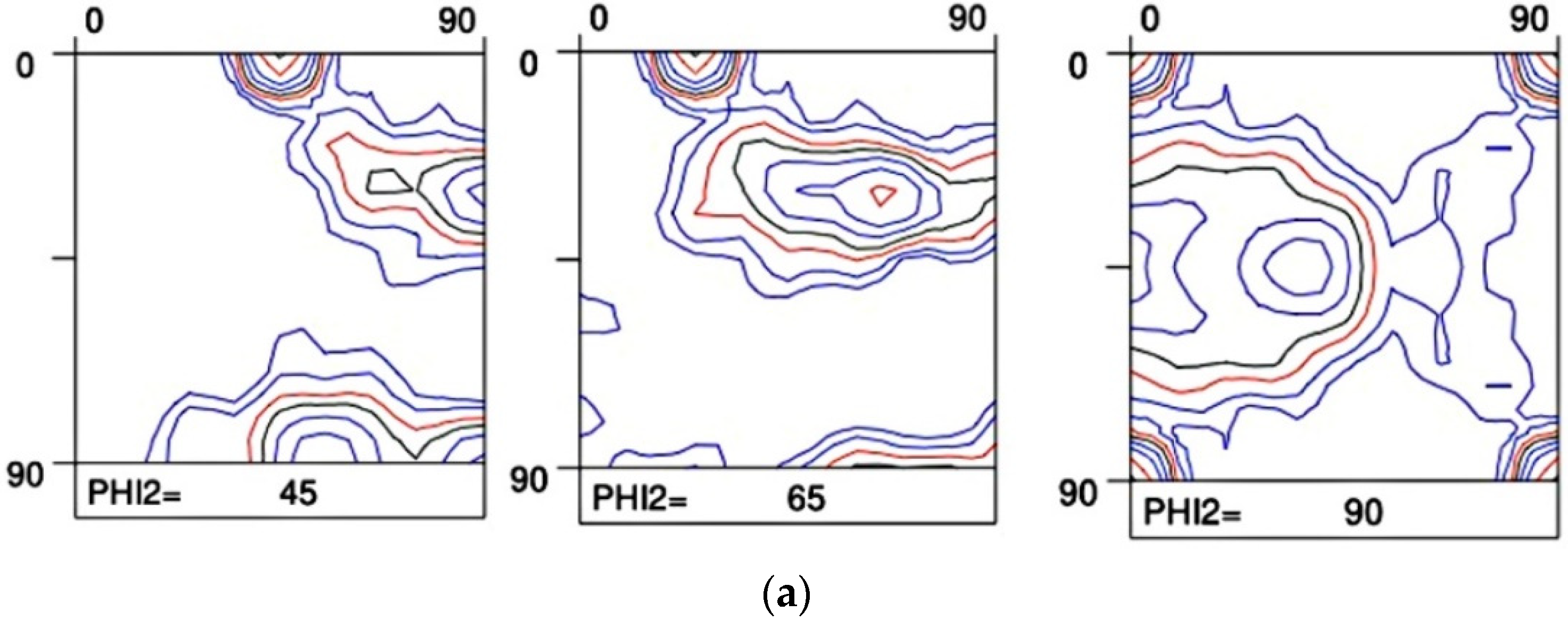
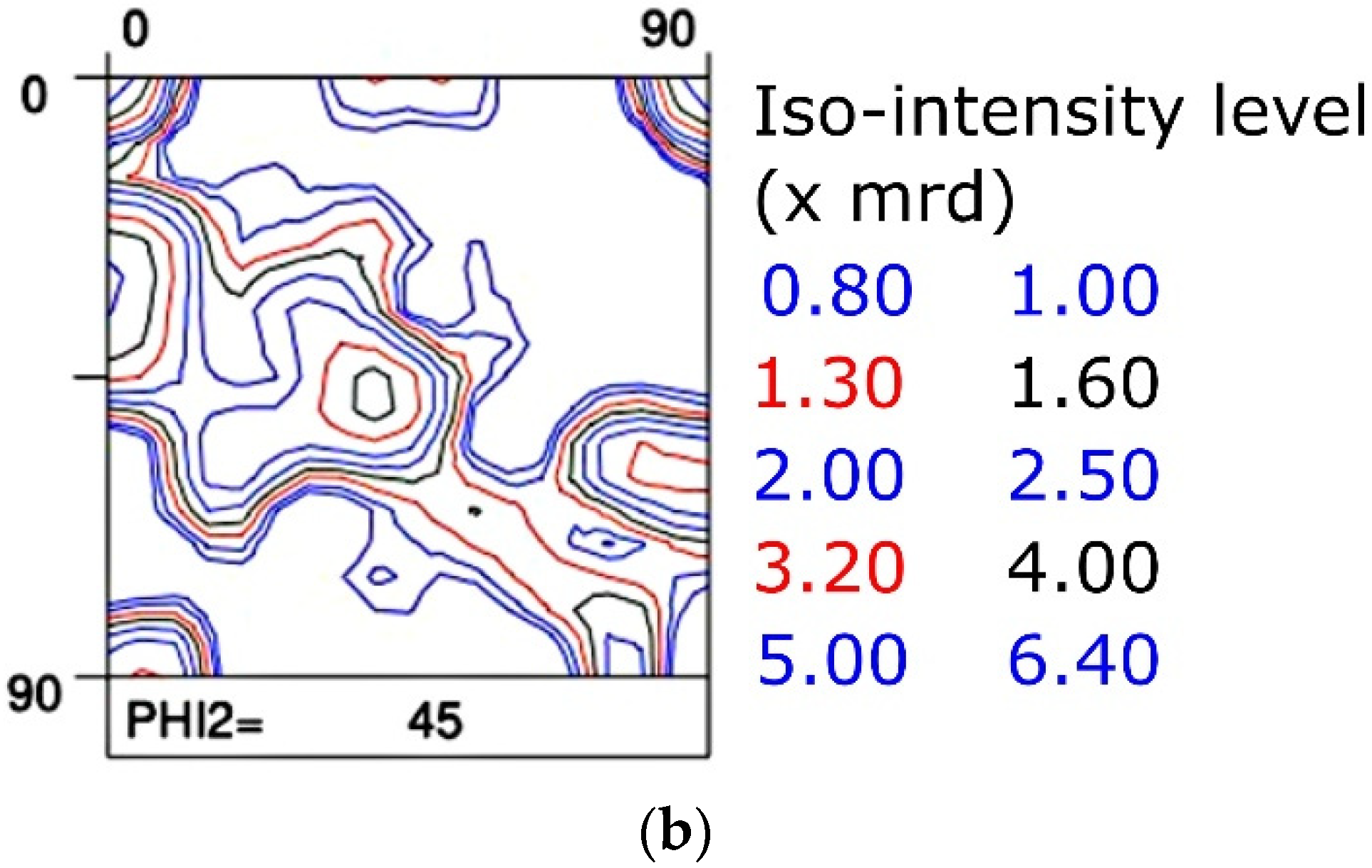
Publisher’s Note: MDPI stays neutral with regard to jurisdictional claims in published maps and institutional affiliations. |
© 2022 by the authors. Licensee MDPI, Basel, Switzerland. This article is an open access article distributed under the terms and conditions of the Creative Commons Attribution (CC BY) license (https://creativecommons.org/licenses/by/4.0/).
Share and Cite
Kestens, L.A.I.; Nguyen-Minh, T.; Petrov, R.H. The Role of Parent Phase Topology in Double Young–Kurdjumow–Sachs Variant Selection during Phase Transformation in Low-Carbon Steels. Metals 2022, 12, 939. https://doi.org/10.3390/met12060939
Kestens LAI, Nguyen-Minh T, Petrov RH. The Role of Parent Phase Topology in Double Young–Kurdjumow–Sachs Variant Selection during Phase Transformation in Low-Carbon Steels. Metals. 2022; 12(6):939. https://doi.org/10.3390/met12060939
Chicago/Turabian StyleKestens, Leo A. I., Tuan Nguyen-Minh, and Roumen H. Petrov. 2022. "The Role of Parent Phase Topology in Double Young–Kurdjumow–Sachs Variant Selection during Phase Transformation in Low-Carbon Steels" Metals 12, no. 6: 939. https://doi.org/10.3390/met12060939





